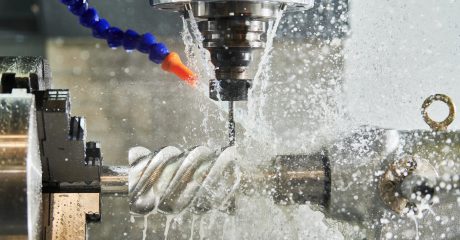CNC machining remains one of the most cost-effective methods for on-demand production to date despite advancements in technologies like 3D printing. However, a few clients could find CNC machining cost calculation quite difficult due to the involvement of various factors.
Do you belong to the category mentioned above? This article will cover the factors that machine shops consider before determining costs. It will also give useful tips on how to reduce these costs to suit your budget. Read on to find out more.
What Determines CNC Machining Cost?
Before you can understand how to reduce your CNC machining cost, you must understand the different factors that contribute to the prices. Below are a few factors machinists consider in their cost calculation.- Materials – This is a very important factor that machinists consider when doing the CNC machining cost calculation. As CNC machining is a subtractive process, it tends to use more material than what will be on the final product. Machinists buy these materials in blocks, and they calculate the prices per block. The two types of materials used mostly in CNC machining are metals and plastics – with plastics being less expensive than metals.
- The Machine itself – The machining cost depends on the price of the machine itself and the number of hours the machine is expected to operate in a year. The two main types of machines used in CNC machining are mainly: 3-axis machines and multi-axis machines. 3-axis machines cost around $35-$40 per hour while multi-axis machines cost around $75-$120 per hour. To get these costs per hour, machinists divide the machine’s price by the number of hours it will operate in a year. Some clients also use machining cost estimator apps to estimate the cost of their projects.
- Labor – Due to the large amount of automation involved in the CNC machining process, you don’t have to pay for a large number of staff members. The main labor costs are for design and digitalization. The labor costs for CNC manufacturing processes are mainly divided into three: programming, setup, and post-processing. Programming costs are the most expensive because it involves design and digitalization costs. You need to outsource your product for a designer to make into a CAD file. Next is the manufacturing engineer who checks your design for reproducibility and gives suggestions on making it better. The last person is the programmer who converts the CAD file into a CAM file to help the CNC machine understand the design. All this expertise will come at a price. Set up involves the machine operator who spends time setting up the machine for a custom CNC job and making sure that everything is performed in a manner that results in a great result. The cost of setup depends on the quantity of the parts to be produced. After production, your production will require some assembly and transportation to your desired location. These post-production processes will involve some manual labor which incurs additional costs.
- Tool Bits – Some custom CNC fabrications might require the machine shop to purchase special tool bits for its production. Although the tool bits will stay in the machine shop after production, you might have to factor them into a part of the machining costs. This is because the tool could wear during production, especially if the raw material has a high level of hardness.
Wrapping it up
CNC machining is essential and based on the principles of necessary precision. That’s why the services don’t come cheap, and they shouldn’t either. If all you need is to get the job done, Custom Tool is your best choice. Our efficient and dedicated team of experts works with our clients to ensure that their project needs and demands are met using the best quality materials and processes possible. Contact us to learn more about how we can help you.
